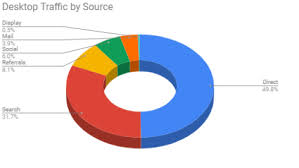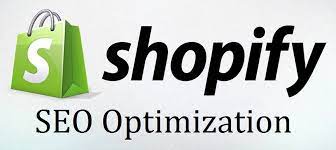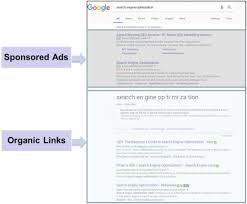Search Engine Marketing (SEM) is an essential component of digital marketing. It involves using paid advertising to increase your website’s visibility on search engine results pages (SERPs). SEM is a highly effective way to drive traffic to your website, generate leads, and increase sales.
The two primary types of SEM are Pay-Per-Click (PPC) and Search Engine Optimization (SEO). PPC involves paying for ads that appear at the top of the SERPs when users search for specific keywords. You only pay when someone clicks on your ad, hence the name “pay-per-click.” SEO, on the other hand, involves optimizing your website’s content and structure to rank higher in organic search results.
One significant advantage of SEM is that it allows you to target users who are actively searching for products or services like yours. This means that you can reach potential customers at precisely the moment they are looking for what you offer. Additionally, SEM provides measurable results, allowing you to track your ROI and adjust your strategy accordingly.
To create a successful SEM campaign, you need to start by identifying the keywords that are relevant to your business and target audience. You can use tools like Google Keyword Planner or SEMrush to find popular keywords related to your industry.
Next, you will need to create compelling ad copy that includes these keywords and entices users to click through to your website. Your landing page should be optimized for conversions, with clear calls-to-action that encourage visitors to take action.
Finally, it’s essential to track and analyze your campaign’s performance regularly. This will enable you to identify areas that need improvement and make data-driven decisions about how best to allocate your budget.
In conclusion, SEM is a powerful tool in digital marketing that can help businesses of all sizes increase their online visibility and drive traffic and sales. By targeting users who are actively searching for products or services like yours and creating compelling ad copy and landing pages, you can achieve significant results and grow your business.
8 Essential SEM Tips for Digital Marketing Success
- Make sure to use relevant keywords in your content and titles.
- Utilize social media platforms such as Twitter, Facebook and Instagram to promote your business.
- Optimize your website for search engine optimization (SEO).
- Create an email list of potential customers and send regular updates about your products or services.
- Use pay-per-click (PPC) advertising to reach more people with targeted ads on search engines like Google and Bing.
- Take advantage of online video marketing by creating short videos that explain what you do or why customers should choose you over competitors.
- Monitor analytics data regularly to measure the success of your campaigns, so that you can make adjustments accordingly if needed.
- Test different strategies and tactics to determine which ones are most effective for reaching your target audience and achieving desired results from SEM activities
Make sure to use relevant keywords in your content and titles.
If you want to succeed in Search Engine Marketing (SEM), one of the most important things you can do is to use relevant keywords in your content and titles. This is because keywords are the foundation of SEM, and they play a crucial role in determining how well your website ranks on search engine results pages (SERPs).
When choosing keywords, it’s essential to think about what your target audience is searching for. You can use tools like Google Keyword Planner or SEMrush to find popular keywords related to your industry. Once you have a list of relevant keywords, make sure to incorporate them into your website’s content, including blog posts, product descriptions, and landing pages.
It’s also crucial to include keywords in your titles and meta descriptions. These elements provide search engines with information about the content on your website and help users decide whether or not to click through to your site. By using relevant keywords in these areas, you can increase the chances that users will find and visit your site.
However, it’s important not to overdo it with keyword usage. Keyword stuffing – the practice of using too many keywords on a page – can actually hurt your rankings and make your content appear spammy. Instead, focus on using natural language that incorporates relevant keywords in a way that makes sense for both search engines and human readers.
In conclusion, using relevant keywords in your content and titles is an essential component of successful SEM. By doing so, you can improve your website’s visibility on SERPs, attract more traffic to your site, and ultimately increase conversions and sales.
Utilize social media platforms such as Twitter, Facebook and Instagram to promote your business.
In today’s digital age, social media has become an integral part of our daily lives. As a business owner, you can leverage this trend to promote your brand and reach a wider audience. Social media platforms such as Twitter, Facebook, and Instagram offer an excellent opportunity to connect with potential customers and engage with your existing ones.
By utilizing social media platforms in your SEM strategy, you can create a strong online presence for your business. You can use these platforms to share updates about your products or services, offer promotions and discounts, and provide valuable information to your followers.
One of the advantages of using social media for SEM is that it allows you to target specific audiences based on their interests, demographics, or behaviors. For example, you can run ads on Facebook that target users who have shown an interest in similar products or services to yours.
Another benefit of using social media is that it provides a platform for two-way communication between you and your customers. You can use social media to respond to customer queries or complaints promptly, creating a positive image for your brand.
To make the most out of social media in your SEM strategy, it’s essential to create engaging content that resonates with your audience. You should also ensure that your profiles are complete and up-to-date with accurate information about your business.
In conclusion, utilizing social media platforms such as Twitter, Facebook, and Instagram is an effective way to promote your business and increase its online visibility. By creating engaging content and targeting specific audiences through ads or organic posts, you can attract new customers while fostering relationships with existing ones.
Optimize your website for search engine optimization (SEO).
Optimizing your website for Search Engine Optimization (SEO) is an essential step in any SEM campaign. SEO involves improving the quality and quantity of traffic to your website by increasing its visibility on search engine results pages (SERPs). By optimizing your site, you can improve your rankings on SERPs and attract more organic traffic to your website.
To optimize your website for SEO, you need to start by researching the keywords that are relevant to your business and target audience. You can use tools like Google Keyword Planner or SEMrush to find popular keywords related to your industry.
Next, you will need to create high-quality content that includes these keywords and provides value to your target audience. Your content should be engaging, informative, and relevant to the user’s search intent.
In addition to creating great content, you also need to ensure that your website is technically optimized for SEO. This includes optimizing the site’s structure, URLs, meta tags, headers, and images. You should also make sure that your site loads quickly and is mobile-friendly.
By optimizing your website for SEO, you will make it easier for search engines like Google to crawl and index your site. This will improve your rankings on SERPs and increase the visibility of your brand online. Better rankings mean more traffic to your site, which can lead to increased conversions and revenue.
In conclusion, optimizing your website for SEO is a critical component of any SEM campaign. By doing so, you can improve the quality and quantity of traffic to your site and attract more potential customers. Remember always to stay up-to-date with the latest trends in SEO best practices so that you can stay ahead of the competition!
Create an email list of potential customers and send regular updates about your products or services.
In digital marketing, building an email list is a critical step towards nurturing potential customers and driving conversions. By collecting email addresses from interested users, you can create a direct line of communication with them and keep them engaged with your brand over time.
One effective way to use your email list is by sending regular updates about your products or services. This allows you to keep your subscribers informed about new offerings or promotions, while also reminding them of the benefits of doing business with you.
When crafting your emails, it’s essential to keep your messaging clear and concise. Use attention-grabbing subject lines and compelling visuals to capture the reader’s attention, and make sure to highlight the value proposition of your products or services.
It’s also important to segment your email list based on factors like demographics, interests, or purchase history. This allows you to tailor your messaging and offers to each group’s specific needs and preferences, increasing the likelihood of conversion.
Finally, make sure that your emails are mobile-friendly and optimized for deliverability. Test your campaigns on different devices and email clients to ensure that they look great and are easy to read on any platform.
By creating an email list of potential customers and sending regular updates about your products or services, you can build a loyal following that drives traffic and sales over time. With careful planning and execution, this strategy can be a powerful tool in any digital marketing arsenal.
Use pay-per-click (PPC) advertising to reach more people with targeted ads on search engines like Google and Bing.
If you’re looking to reach a wider audience and increase your website’s visibility on search engines like Google and Bing, then Pay-Per-Click (PPC) advertising is an excellent option. PPC allows you to create targeted ads that appear at the top of the search engine results pages (SERPs) when users search for specific keywords related to your business.
The beauty of PPC advertising is that you only pay when someone clicks on your ad, making it a cost-effective way to drive traffic to your website. Additionally, PPC ads are highly customizable, allowing you to target specific demographics, locations, and even times of day.
To create a successful PPC campaign, you need to start by identifying the keywords that are relevant to your business and target audience. You can use tools like Google Keyword Planner or SEMrush to find popular keywords related to your industry.
Next, you will need to create compelling ad copy that includes these keywords and entices users to click through to your website. Your landing page should be optimized for conversions, with clear calls-to-action that encourage visitors to take action.
Finally, it’s essential to track and analyze your campaign’s performance regularly. This will enable you to identify areas that need improvement and make data-driven decisions about how best to allocate your budget.
In conclusion, PPC advertising is a powerful tool in digital marketing that can help businesses of all sizes increase their online visibility and drive traffic and sales. By targeting users who are actively searching for products or services like yours with customized ads and optimizing landing pages for conversions, you can achieve significant results and grow your business.
Take advantage of online video marketing by creating short videos that explain what you do or why customers should choose you over competitors.
Video marketing has become increasingly popular in recent years, and for a good reason. Videos are an effective way to engage with your audience and communicate your message in a more dynamic and engaging way than text or images alone.
When it comes to SEM, video marketing can be a powerful tool to help you stand out from your competitors. By creating short videos that explain what you do or why customers should choose you over others, you can capture their attention and build trust and credibility.
One of the benefits of video marketing is that it allows you to showcase your products or services in action. For example, if you run a restaurant, you could create a video that shows how your chefs prepare dishes using fresh ingredients. Or if you offer personal training services, you could create a video that demonstrates some of the exercises your clients can expect to do.
Another advantage of video marketing is that it can help improve your search engine rankings. Google and other search engines prioritize websites with high-quality content, including videos. By incorporating videos into your website and social media channels, you can increase the time visitors spend on your site, which signals to search engines that your content is valuable.
When creating videos for SEM purposes, keep in mind that shorter is often better. Most people have short attention spans when browsing online, so aim for videos that are no longer than two minutes. You should also ensure that your videos are optimized for search engines by including relevant keywords in the titles and descriptions.
In conclusion, online video marketing is an excellent way to enhance your SEM strategy. By creating short videos that showcase what makes you unique and engaging with customers on a more personal level, you can increase brand awareness and drive traffic to your website.
Monitor analytics data regularly to measure the success of your campaigns, so that you can make adjustments accordingly if needed.
When it comes to Search Engine Marketing (SEM), monitoring analytics data is crucial to measuring the success of your campaigns. By regularly reviewing your analytics data, you can gain valuable insights into how your ads are performing and make adjustments accordingly if needed.
Analytics data provides a wealth of information, including the number of clicks, impressions, click-through rates (CTR), and conversion rates. These metrics can help you determine which keywords and ad copy are driving the most traffic and conversions to your website.
Regularly monitoring your analytics data allows you to identify trends and patterns in user behavior over time. For example, you may notice that certain keywords or ad groups perform better on specific days or times of the week. Armed with this information, you can adjust your bidding strategy or ad scheduling to maximize your ROI.
Additionally, analytics data can help you identify areas where your campaigns may be underperforming. For instance, if you notice a high bounce rate on a particular landing page, it may be an indication that the page needs optimization to improve user experience.
In conclusion, monitoring analytics data regularly is essential for SEM success. By keeping a close eye on your metrics and making adjustments accordingly, you can optimize your campaigns for maximum performance and achieve better results over time.
Test different strategies and tactics to determine which ones are most effective for reaching your target audience and achieving desired results from SEM activities
When it comes to Search Engine Marketing (SEM), it’s essential to test different strategies and tactics to determine which ones are most effective for reaching your target audience and achieving desired results. While there are best practices and industry standards, every business is unique, and what works for one may not work for another.
One way to test different SEM strategies is by conducting A/B testing. This involves creating two versions of an ad, landing page, or other element of your campaign and comparing their performance. By testing different variables, such as headlines, images, or calls-to-action, you can identify which elements are most effective at driving conversions.
Another way to test SEM strategies is by experimenting with different targeting options. For example, you could try targeting specific geographic locations or demographics to see which groups respond best to your ads. You could also experiment with different bidding strategies or ad formats to determine which ones generate the highest ROI.
It’s important to keep in mind that SEM is an ongoing process of optimization and refinement. What works today may not work tomorrow, as search algorithms change and consumer behavior evolves. By continually testing new strategies and tactics, you can stay ahead of the curve and ensure that your SEM efforts are delivering the best possible results.
In conclusion, testing different strategies and tactics is a crucial part of successful SEM campaigns. By using A/B testing, experimenting with targeting options, and continually refining your approach based on data-driven insights, you can optimize your SEM efforts for maximum impact.



